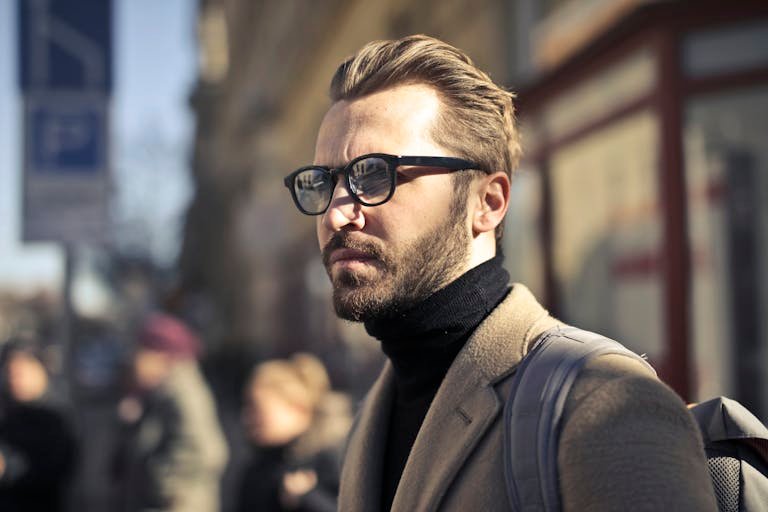11 Types of Lenses in Spectacles – Uses & Benefits Explained
Have you ever stepped into a vision center and been blinded by the variety of types of lenses in spectacles? You get to come across terms such as single vision, progressive, polarized, and photochromic, but what do they all mean, and which of the above is suitable for you? One would think that the wrong lens would only complicate your vision, but your comfort, stylishness, and even eye health in the long term.
Hi, my name is Laura, and I have spent years researching the latest technology in lenses and assisting individuals such as yourself in making the correct decision in regards to their eyes. I have associated with optometrists, and I studied the eyewear sphere.
In this guide, I will provide all the major types of spectacle lens, their actual meaning, everyday applications, as well as recommendations.
1. Single Vision Lenses
Optical lenses of single vision eyeglasses have a consistent curvature of focal power at the principal point and uniform curvature.
Benefits
- Inexpensive and accessible in abundance
- There exist plastic or polycarbonate lightweight options
- Gets easy to get used to

2. Bifocal Lenses
Bifocal lenses are Optical lenses that are split into two different optical powers, usually: the top part of the lens is used to see at a distance, and the bottom part of the lens is used to see near, with a visible demarcation.
Benefits
- Handy to have two prescriptions in one lens, saving the need to carry two or more pairs of glasses, etc.
- Conserves time so that it is easy to alternate between reading and distance vision
- Less expensive than purchasing two sets of reading glasses, as well as distance eyeglasses

3. Progressive Lenses
The progressive lens is a type of multifocal lens that uses a smooth gradation of power from the top (distance) to the bottom (near) with no apparent transition between the lens powers and offers clear vision at a variety of distances.
Benefits
- Good transition of vision
- Superior when doing tasks such as driving, reading, and computer work
- Fashionable, free of delineation lines

4. Photochromic Lenses
Photochromic lenses are optical glasses, and in the lenses, there are photochromic molecules that automatically change their color when they come into contact with ultraviolet (UV) radiation. They blacken out and become transparent indoors,
Benefits
- UV protection
- Comfort of the eye with different light
- It is made available in various materials

5. Polarized Lenses
Polarized lenses are specifically designed with a laminated filter that stops the horizontal polarization of light waves, thereby minimizing glare on a reflective surface like water, snow, and roads.
Benefits
- Better visual clarity
- Reduced eye strain
- Outdoor sports are suitable to be use

6. High-Index Lenses
High-index spectacle optical lenses consist of any type of optical material (with a higher index of refraction), 1.60 or higher. This enables them to correct with fewer bends of light and hence, be thinner and lighter with the same prescription strength.
Benefits
- More comfortable to wear
- Less magnification/minification effect
- Aesthetic appeal

Read Also: Don’t Get Scammed—Check If Gucci Sunnies Are Real Now
7. Blue Light Blocking Lenses
Optical lenses that have been treated using a special coating or even impregnated with pigments selectively filter the high-energy visible (HEV) blue light (400 nm500 nm). Blue light blocking lenses will eliminate the degree of digital eye irritation and retinal damage stress, which is caused by exposure to blue light of considerable power (HEV).
Benefits
- Digital eye strain occurs when working for long periods on the monitor, and to feel more comfortable.
- Brings about better sleep quality by reducing the amount of blue light exposure in the evenings.
- It helps protect the eyes against damage that can be caused by damaging blue light in the long run.

8. Aspheric Lenses
Aspheric lenses are manufactured in such a manner that their surface curvature gradually varies throughout, and this has the effect of reducing a percentage of the spherical aberrations present, and also it can result in a flatter than standard lens shape in the case of spherical lenses.
Benefits
- Less distortion
- Better aesthetics
- Lightweight design

9. Trifocal Lenses
Trifocal lenses are multifocal lenses divided into three different optical powers to serve near, intermediate, and distant vision, that is, with distinct optical powers separated by visible lines.
Benefits
- Gives a clear vision, at near, intermediate, and distance ranges in a single lens
- Lessens the necessity to change many pairs of spectacles
- This lens is perfect for individuals with presbyopia who need to see the three zones of vision to carry out their day-to-day activities

10. Safety Lenses
Safety lenses are optical lenses, created using impact safety materials (polycarbonate or Trivex) to protect the eye under particular ANSI or EN safety requirements.
Benefits
- Provide higher impact resistance to safely view the world in high-risk situations
- Long-lasting in their nature of safety and clarity, made of materials such as polycarbonate.
- Gives us a clear view as well as the most protection when performing our jobs or in sports.

11. Anti-Reflective (AR) Coated Lenses
Anti-reflective coated lens is a lens of the optical type that is subjected to various microscopic transparent layers that provide minimization of the surface reflections, enhancing the light transmission, and decreasing glare.
Benefits
- Sharper vision
- Reduced glare
- Greater aesthetics in photographs
FAQs
1. WHAT are the three types of wearing lenses?
Single vision, bifocal, and progressive.
2. What kind of lens to focus on spectacles?
It depends on what you need: one distance single vision, multi-distance progressive, and outside photochromic.
3. What sort of Spectacle lenses are there?
In addition to glasses, there are more than 10 available types, including single vision, bifocal, progressive, photochromic, and blue light blocking lenses.
4. What does Category 4 lenses mean?
Saturation level for highest sunlight …good for Mountain Climbing, not driving.
Read Also: Blue Light Glasses: Benefits, Side Effects & How They Work
Final thoughts
The lens spectacle you wear can either make or break your comfort level of vision. Those with one-vision to see all the time, those in progressive lenses because it is easier to switch distances every day, a pair of photochromic lenses to shield the sun, or a pair of blue-light-blocking lenses to have an eye strain-free digital life, all have to fit with a lifestyle.
An appropriate lens not only allows you to see, but it also serves as the safeguard of your eyes, fashion, and makes your everyday life so much easier.







